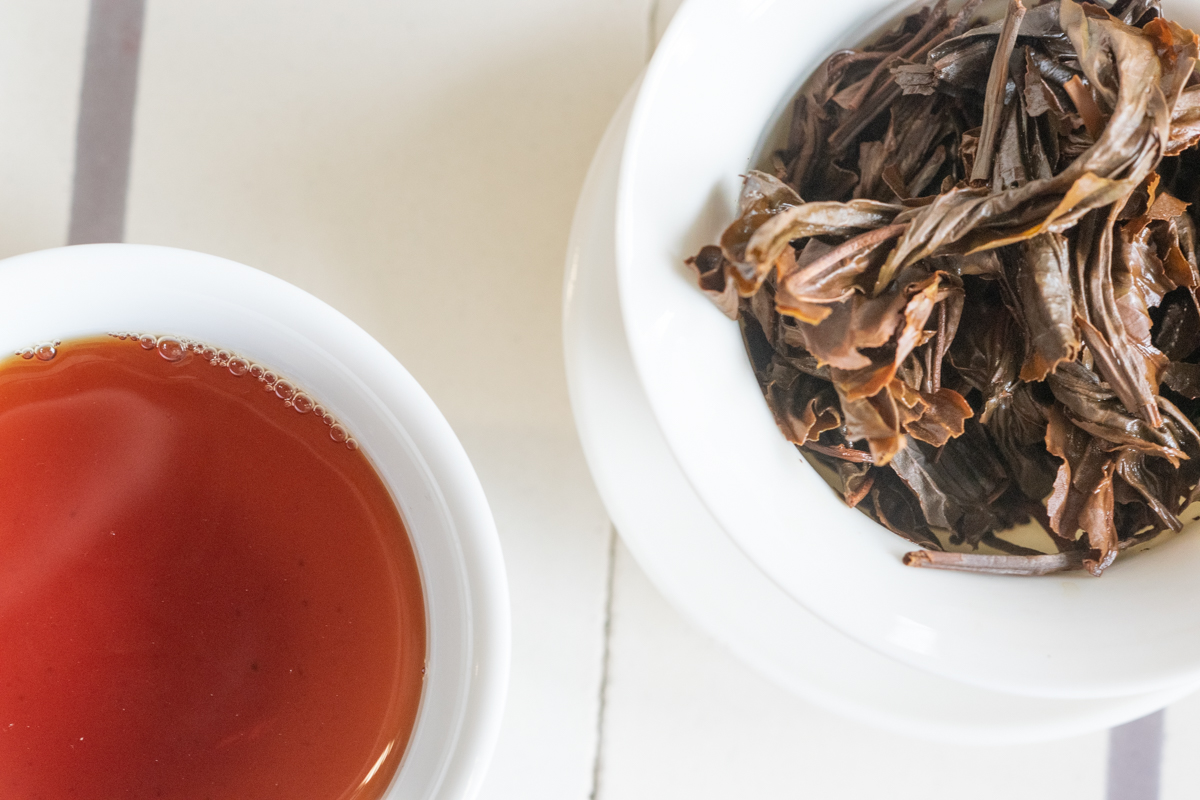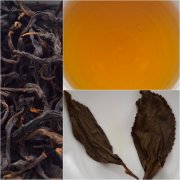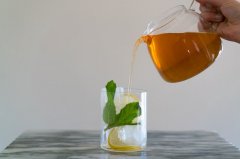Taiwan Tea No. 18 Red Jade Black Tea has honey fragrance. The reason why Darjeeling black tea and Taiwan black tea are different
Aroma components of honey-scented tea what are the characteristic aroma components of honey-scented tea? This is the most common question asked by ordinary tea farmers, tea merchants or consumers. What is the biochemical pathway and mechanism of how this component is formed? At present, the scientific community has only solved the first half of the mystery, that is, only to unravel the characteristic chemical composition of natural honey incense, how the chemical component is formed and its mechanism remains to be discussed. The first research work on the aroma components of honey-scented tea was Japanese scholar Akio Kobayashi. In 1990, Japanese Yoshio Kobayashi made oriental beauty tea with small green leafhopper (Empoasca onukii Matsuda). The aroma components were studied and compared with oolong tea and black tea made without small green leafhopper. The results showed that the aroma components of Oriental Beauty Tea had two characteristics: one was that Oriental Beauty Tea contained a large amount of linalool and linalool Ⅰ, Ⅱ, Ⅲ, which was much higher than ordinary oolong tea (but linalool in black tea was higher), and the contents of linalool Ⅰ and linalool Ⅱ in Oriental Beauty Tea were nearly 110 times higher than those in ordinary Oolong Tea and Black Tea. Compared with the ratio of the total amount of linalool derivatives to linalool, the most important characteristic of the aroma of Oriental Beauty Tea is that the ratio is obviously very high, which is 2 times and 10 times larger than that of ordinary oolong tea and black tea. Another feature is that Pufeng tea is rich in 3meme 7-dimethyl-1meme 5meme-7-octtriene-3-ol (3meme 7murm dimethymer), which is more than 20 times higher than oolong tea and black tea. At that time, Chang-fu Kobayashi speculated that this was probably the characteristic aroma component of Oriental Beauty Tea and could only be formed by the tea cyanine ingested by the small green leafhopper, but it had not yet been clearly confirmed at that time.

It was not until 1996 that Shofu Kobayashi and others conducted another study on the characteristic aroma components of honey-scented tea. Zhangfu Kobayashi compared the oriental beauty tea and Darjeeling black tea which were also infected by the small green leafhopper, and compared with other black teas without honey flavor that were not infected by the small green leafhopper. The results showed that Darjeeling black tea and oriental beauty tea, which were also ingested by the small green leafhopper, had the most characteristic aroma components, which were extremely rich in 2-dimethyl-3-dimethyl-7-octadiene-2-diol, while the content of oriental beauty tea was particularly high, while the content of oriental beauty tea was particularly high, on the contrary, the content of this component was very rare in the tea not absorbed by small green leafhopper. This ingredient is considered to be the main reason for the honey flavor (muscat flavor) of Oriental Beauty Tea and Darjeeling Black Tea. Another ingredient in Oriental Beauty Tea and Darjeeling Black Tea is also very high, that is, 3pyrrine 7-dimethyl-1pyrrine 5pyrrolidine 7-octatriene-3-ol. In short, according to the characteristics of the current "honey incense" flavor, there are two components, namely, 2meme 6-dimethyl-3meme 7-octadiene-2meme 6-diol and 3meme 7-dimethyl-1meme 5reiol are considered to be the characteristic components of "honey incense". The former is formed by abnormal metabolism after being ingested by the small green leafhopper, while the latter is formed by dehydration (dehydration) of the former during processing or other processes. Zhangfu Kobayashi's research shows that Oriental Beauty Tea contains 6-dimethyl-3-diene-2-diol, which is much higher than Darjeeling black tea which is also ingested by small green leafhopper. Many other Darjeeling black tea aroma studies also show that Darjeeling black tea contains high levels of monoterpenes compounds, which is the biggest difference between Darjeeling black tea and Assam black tea. Among the aroma components of more than 600 species of Darjeeling black tea, it is also confirmed that 2pyrrine 6-dimethyl-3pyrrine 7-octadiene-2pyrrodiol and 3meme-7octatriene-3-ol are the characteristic components of Darjeeling honey. The secret of honey-scented tea honey-scented tea not only has a special flavor, but also hides the secret of nature, that is, the tea buds of he small green leafhopper should produce this special chemical component with honey fragrance. In recent years, Chen Zongmao and others of the Tea Institute of the Chinese Academy of Agricultural Sciences have discussed the correlation of chemical information among tea trees, pests and natural enemies, and solved the mystery of why the tea sprouts of the small green leafhopper produce 2-dimethyl-3-octadiene-2-diol. It turns out that there is a truth of "natural selection, survival of the fittest" in nature, a more accurate description of "mantis replenishes the cicada" with the Chinese. The truth of "sparrow in the back" is consistent with each other. After the small green leafhopper feeds on the tea sprouts, the tea tree may evolve for hundreds or thousands of years in order to grow and survive. Through abnormal metabolic pathways, the tea green buds produce a special ingredient, 2-dimethyl-3-diene-2-diol, which, at very low concentrations, can attract the natural enemy of the small green leafhopper, the white spot wax spider (Evarcha albaria), to feed on the small green leafhopper. So that the tea buds can continue to grow. In other words, tea plants produce this special ingredient through abnormal metabolism to call for help from natural enemies to defend themselves. In addition, Chen Zongmao and others also confirmed that if the small green leafhopper was injured by chewing and piercing (that is, mechanical injury) with an artificial insect needle, the tea tree would release some volatiles, but the special components produced were different from those harmed by the real small green leafhopper. However, if the oral secretion of the small green leafhopper was extracted and applied to the shoots injured by acupuncture machinery. 2-dimethyl-3-octadiene-2-diol is also produced, which indicates that the oral secretion of small green leafhopper is the real cause of the formation of this special honey-fragrant ingredient in tea buds.
Important Notice :
前街咖啡 FrontStreet Coffee has moved to new addredd:
FrontStreet Coffee Address: 315,Donghua East Road,GuangZhou
Tel:020 38364473
- Prev

Is the honey flavor of black tea made with additives? The types of honey black tea and the reasons for honey fragrance
What is honey tea? Very few crops have increased their added value after being infected by pests and diseases, but the honey tea series of tea is a special example. What is honey tea? Is honey sweet tea outside add honey to produce, or tea processing process place produces? This is the question most frequently asked by consumers. currently
- Next

The difference between hot water and cold water brewing tea what are the effects of cold brewing black tea and oolong tea on the body
When summer lotus and cicadas sing open the prelude to summer, at this time, you might as well brew a pot of cold fragrant tea to cool the cold tea to quench your thirst and release the annoyance in your heart. [soak the tea with cold water for a long time and slowly release sweetness] Cold brewing tea, as the name implies, is to brew the tea directly with cold water to let the tea slowly.
Related
- Caught off guard! Starbucks '15-year-old store quietly closes!
- Naixue Drink drank a stone and claimed a claim was retaliated by the merchant?!
- What is the difference between a cake filter cup and a V60 conical filter cup? What are the advantages and disadvantages of the flat-bottomed filter cup brewing solution?
- What is the difference between fine coffee powder and medium coarse coffee powder? Do I need to sift out the fine coffee powder for making coffee by hand?
- Why does hot American coffee taste bitter? Difference in proportional concentration between hot American and ice American
- Is espresso stored overnight in the refrigerator harmful to your body? Is frozen coffee better than freshly ground coffee?
- What parameters and proportions of water temperature should be used to grind and brew fresh coffee beans? Why can't I drink freshly roasted coffee right away?
- Customers have "changed" Manner's new products! Shop assistant: Please don't mess around!
- Remove sockets in customer areas at Starbucks stores?! Netizen: I won't go if I really tear it down
- What is the difference between the taste steps of sun-dried coffee and washed coffee? Why is sun-cured coffee sweeter and washed coffee sour?

